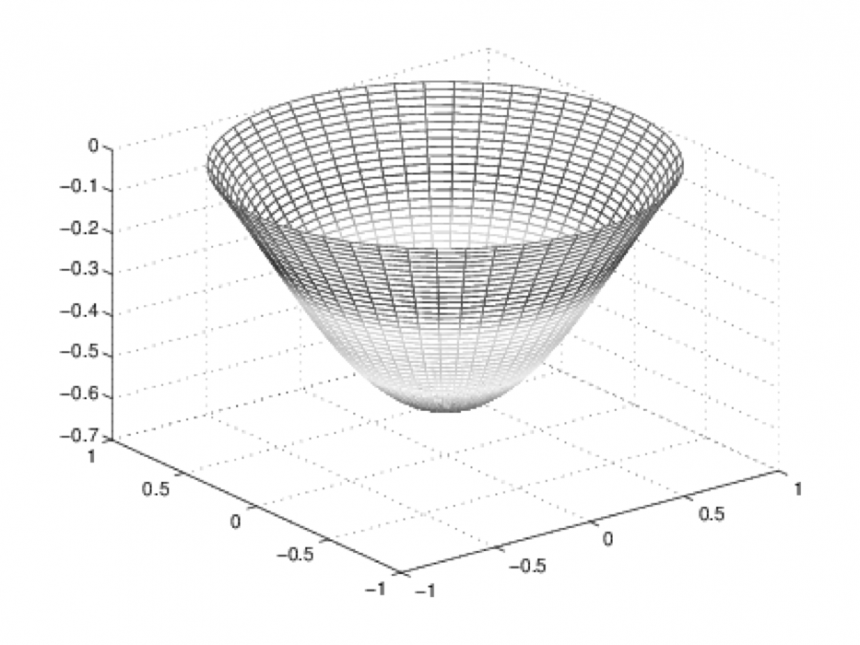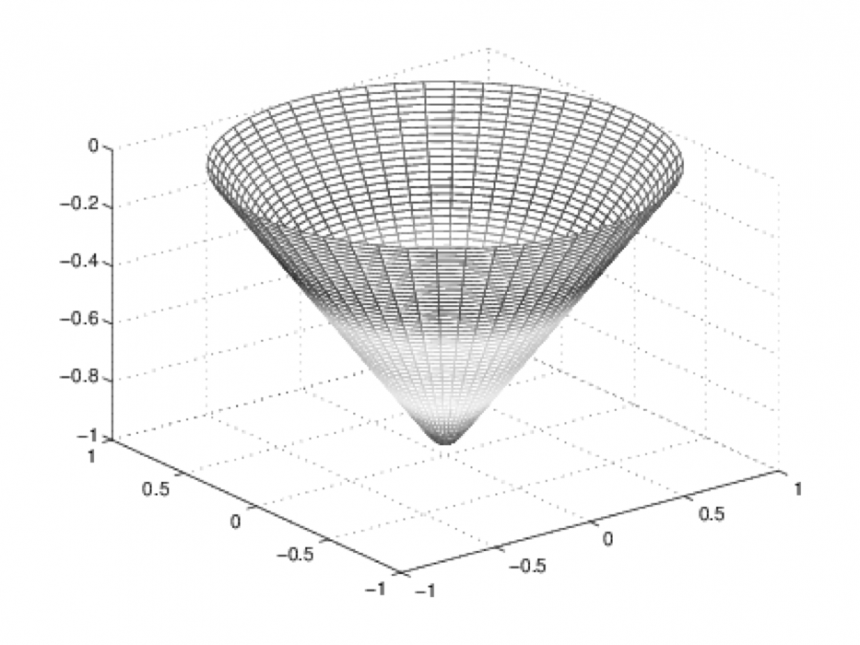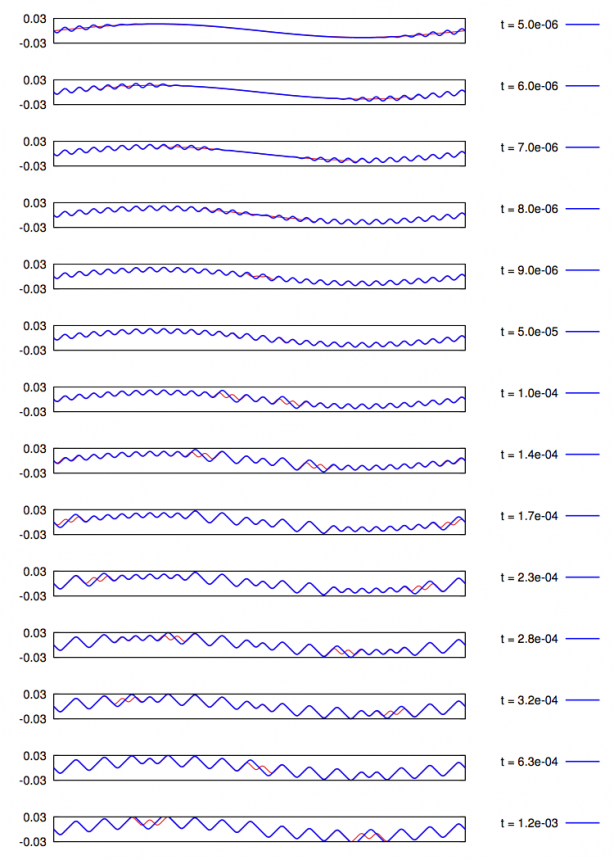Anisotropic energies
Anisotropic energies characterize situations where directions in the space are differently weighted; this applies, for instance, to crystal growth. The evolution equation for the anisotropic area functional, the anisotropic mean curvature flow, is ill-posed in the case of non-convex anisotropies.
To avoid the difficulties caused by this fact, Angenent and Gurtin [AnGu] proposed a regularization via a higher-order term that corresponds to the \(L^{2}\) gradient flow of Willmore energy. In the graph setting of co-dimension one, this leads to [PR1] \[ E_\varepsilon :\quad u\mapsto \int_{\text{graph}\,u}\gamma(\nu)\,\mathrm{d}s + \varepsilon^2\int_{\mathrm{graph}\,u}H^2\,\mathrm{d}s \qquad\text{for }\; u\in W^{2,2}(\Omega), \] where \(\gamma:\mathbb{R}^{\dim\Omega+1}\to[0,\infty)\) denotes the anisotropy, \(\nu\) the outer normal to the graph, \(H\) its (mean) curvature, and \(\Omega\) is an open set. We consider an interval [PR1, PR2] and the two-dimensional unit disk in the rotationally symmetric setting [PR3].


global \(E_{\varepsilon}\)-minimizers for \(\varepsilon\searrow0\)
Minimizers
Both for the stationary case and the evolution, one is interested in letting the regularization parameter tend to zero. In the first case, the regularization acts like a choice criterion: among infinitely many minimizers it approximates the one with the least number of discontinuity points of the first derivative. The situation is related to corresponding settings in phase transitions [CGS], especially to the Aviles-Giga functional [AvGi] whose \(\Gamma\)-limit, in spite of great efforts, still lacks a rigorous understanding.
Restricting to the rotationally symmetric case, we obtain a one-dimensional variational problem which permits to derive substantial qualitative information on the minimizers. We show that minimizers tend to a “cone”-like solution as the regularization parameter tends to zero. Areas where the solutions are either convex or concave are identified. It turns out that the structure of the chosen anisotropy hardly affects the qualitative shape of the minimizers.
Surprisingly, the surfaces corresponding to rotationally symmetric global \(E_{\varepsilon}\)-minimizers are in fact concave in a neighborhood of the boundary.
The evolution
The evolution is characterized by the formation of microstructures at the first stage (fast time scale). Its length tends to zero as the regularization parameter decreases, thereby causing a discontinuity of the evolution. Similar phenomena have been obtained for a non-geometric model problem [BFG].
The numerical simulation is based on a FEM discretization.
References
| [AnGu] | Sigurd Angenent and Morton E. Gurtin. Multiphase thermomechanics with interfacial structure. II. Evolution of an isothermal interface. Arch. Rational Mech. Anal., 108(4):323–391, 1989. |
| [AvGi] | Patricio Aviles and Yoshikazu Giga. A mathematical problem related to the physical theory of liquid crystal configurations. In Miniconference on geometry and partial differential equations, 2 (Canberra, 1986), volume 12 of Proc. Centre Math. Anal. Austral. Nat. Univ., pages 1–16. Austral. Nat. Univ., Canberra, 1987. |
| [BFG] | Giovanni Bellettini, Giorgio Fusco, and Nicola Guglielmi. A concept of solution and numerical experiments for forward-backward diffusion equations. Discrete Contin. Dyn. Syst., 16(4):783–842, 2006. |
| [CGS] | Jack Carr, Morton E. Gurtin, and Marshall Slemrod. One-dimensional structured phase transformations under prescribed loads. J. Elasticity, 15(2):133–142, 1985. |
| [PR1] | Paola Pozzi and Philipp Reiter. Willmore-type regularization of mean curvature flow in the presence of a non-convex anisotropy. The graph setting: analysis of the stationary case and numerics for the evolution problem. Advances in Differential Equations, 18(3–4):265–308, 2013. |
| [PR2] | Paola Pozzi and Philipp Reiter. Approximation of non-convex anisotropic energies via Willmore energy, CD-ROM Proceedings of the 6th European Congress on Computational Methods in Applied Sciences and Engineering (ECCOMAS 2012), Vienna. |
| [PR3] | Paola Pozzi and Philipp Reiter. On non-convex anisotropic surface energy regularized via the Willmore functional: the two-dimensional graph setting. ESAIM: COCV, 23(3):1047–1071, 2017. |





